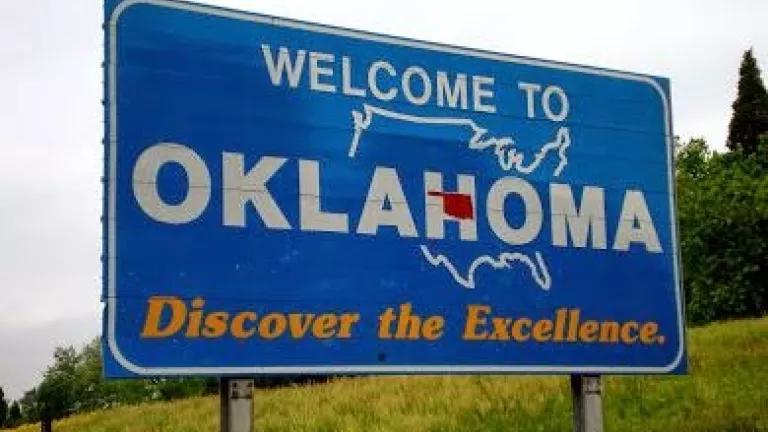Oklahoma - First State to Choose a Federal Plan for Power Plant Carbon Pollution (Don't Worry, They'll be O.K.)

Oklahoma Governor Mary Fallin issued an executive order yesterday prohibiting her state's environmental agency from even beginning to develop a state plan to limit power plants' carbon pollution.
By refusing to write her own plan, Gov. Fallin becomes the first governor to take Sen. Mitch McConnell's "just say no" pledge. She also becomes the first governor to pass up the opportunity to tailor a plan to her own state's needs and opportunities, and the first to turn over implementation to the federal government.
Power plants are the number one source of the carbon pollution that drives dangerous climate change. There are no national limits on that pollution now. The Environmental Protection Agency's Clean Power Plan, expected to be finalized this summer, will set state-by-state limits for power plants to cut back that pollution, giving each state the flexibility to tap the wide variety of cleaner resources in the way that best suits its circumstances.
Oklahoma Senator James Inhofe is known for denouncing climate science as a hoax, and Oklahoma Attorney-General Scott Pruitt is known for his close ties to the fossil fuel industry. So it's not surprising that conservative Republican politicians in the Sooner State would rather say "later" to carbon pollution standards.
Gov. Fallin is within her rights, of course, to leave implementation to the EPA. The Clean Air Act gives each state the first opportunity to craft a plan to meet federal pollution standards, but the state can refuse. If a state does not act, however, the duty falls to the EPA to write and implement regulations that apply directly to the state's power plants.
Apart from Oklahoma, states aren't rushing to jump on the "just say no" bandwagon. Most states are actively engaging in the planning process, even before the final EPA standards come out. That's because most power companies and political leaders prefer to have their states in the lead, making the choices involved in writing implementation plans, rather than leaving it to the EPA.
Where Gov. Fallin complains of "unworkable barriers," a growing number of other governors see economic and job creation opportunities. Another Republican, Michigan Gov. Rick Snyder issued a special message in March on "Ensuring Affordable, Reliable, and Environmentally Protective Energy for Michigan's Future." He announced a bold vision for cutting energy waste, doubling renewable generation, and curbing emissions. Gov. Snyder said: "We need to act now to make sure we have the tools to solve our own problems and keep decision-making in Michigan, not in Washington D.C."
But whether its plan is written by the governor or by the EPA, Oklahoma will be O.K. The state has enormous potential to cut its carbon pollution in ways that will help build Oklahoma's economy, create jobs, and save electricity customers money. The state ranks 9th in onshore wind power potential and 11th in solar power potential. (As the song says, the wind comes sweepin' down the plain.) Oklahoma also has yet to tap into energy efficiency, its cheapest energy resource - it ranked 36th in the country in utility efficiency programs in 2013, with annual power savings less than a fifth of the rate already achieved in states with more advanced programs. And, of course, the state has all that gas.
So there's nothing earth-shaking here for state officials to be afraid of.
There's no doubt that Attorney-General Pruitt will challenge the Clean Power Plan in the courts. He already jumped the gun, with 13 other state AGs, in a case argued two weeks ago before the U.S. Court of Appeals in Washington. That case seems bound to fail, as the attack got little sympathy from a conservative three-judge panel. EPA's legal position will be strong when the standards are finalized this summer.
If the state does nothing in the following year, then a federal plan will come into play.
Perhaps for that reason, even Gov. Fallin has left herself an escape hatch. Her executive order allows the state to pick up the planning and implementation role again if doing so is deemed required by the state attorney-general or by the courts.
Meanwhile, most states seem committed to stay engaged, and to keep Clean Power Plan implementation in their own hands.

